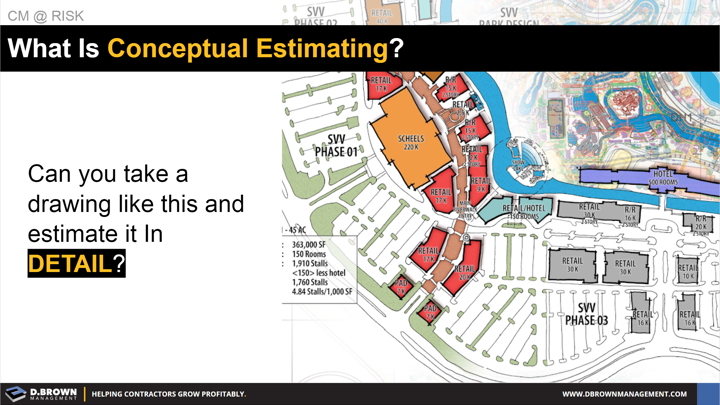It is important to remember that during these early stages, the developer is working to put together financing for the project.
There is a lot of risk for all parties in a new development and as with any type of financing, banks are looking at the 5Cs with covenants, just a like a contractor has on their credit line.
The difference between a project moving forward or not is often in the single-digit percentage on cost and revenue projections. With construction costs being about half the total cost of the development, it is critical that the contractor can create a realistic budget even at this early stage.
- Too high of a plug number and the development won’t pencil out for cash flow. They will likely source a second opinion from another contractor or pull the plug on the development.
- Too low of a plug number and it won’t be constructable. Raising the number later in the process may cause the financing to get pulled from the project.
- That budget must be detailed in a way that is truly useful for the project owner, architect, consulting engineers and contractor to make good decisions during the schematic, design development, and construction document phases.
The better a contractor is at this, the earlier and more often they will be brought into the process.

